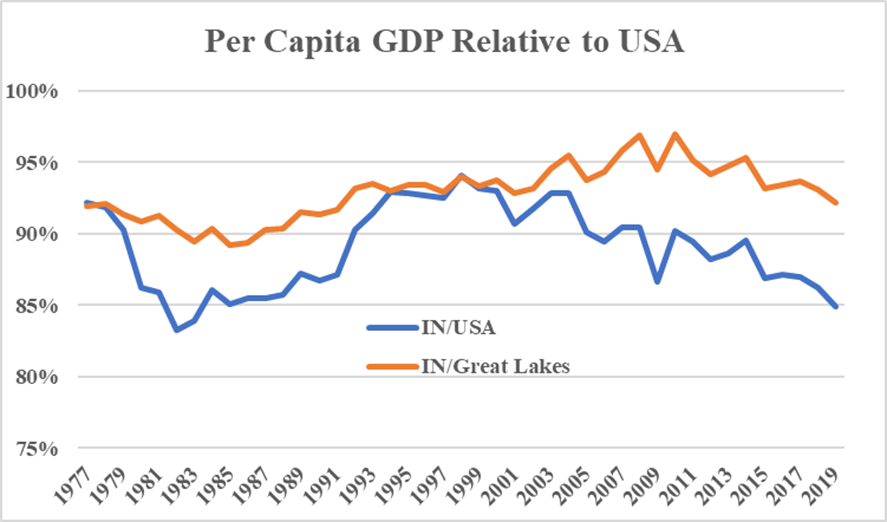
Father of three marvels. Lucky husband. Parent lottery winner. Retired infantryman. George & Frances Ball Dist. Prof. of Economics, VMI '84, Tennessee '98
How to get URL link on X (Twitter) App





 2/ Part of this decline is offset by steadily rising Federal share of spending by the state. As Indiana becomes poorer, we receive a higher share of Federal dollars for key programs, particularly medical care.
2/ Part of this decline is offset by steadily rising Federal share of spending by the state. As Indiana becomes poorer, we receive a higher share of Federal dollars for key programs, particularly medical care. 










 2/n This budget also revitalizes the @Mike_Pence Regional Cities Initiative, which is among the more successful (and thoughtful) urban growth efforts in any state in recent decades.
2/n This budget also revitalizes the @Mike_Pence Regional Cities Initiative, which is among the more successful (and thoughtful) urban growth efforts in any state in recent decades.


https://twitter.com/oren_cass/status/1286691198594359296?s=202/n Two points need expansion. First, a trade deficit is funded through capital inflows. But, @oren_cass, and he makes a bizarre critique of the form of capital inflow. He argues the form of the inflow has some important economic consequence. But, it doesn’t





 2/n This daily consumer spending data shows that Indiana began to reduce consumer spending BEFORE the stay at home order was introduced. In fact, consumer spending dipped by 37% by that date, or roughly 75% of the full drop.
2/n This daily consumer spending data shows that Indiana began to reduce consumer spending BEFORE the stay at home order was introduced. In fact, consumer spending dipped by 37% by that date, or roughly 75% of the full drop. 

